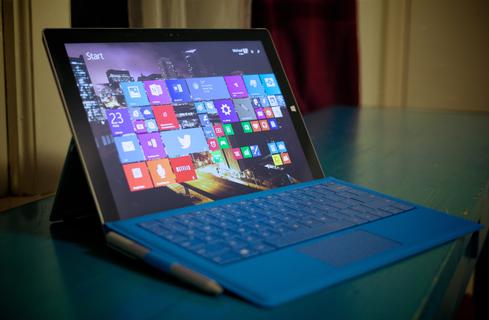Microsoft Surface Pro 3 Hits Stores: 3 Cautions
After a month of hype, Microsoft's Surface Pro 3 hits stores on Friday. Consider these facts before you pull out your wallet.


Surface Pro 3 Vs. World: Mobile Smackdown
Surface Pro 3 Vs. World: Mobile Smackdown (Click image for larger view and slideshow.)
Though some models won't ship until later this summer, the first batches of Microsoft's Surface Pro 3 hit stores Friday, a month after the company introduced the device at an event in New York. The newest Pro has earned better reviews than its predecessors. Praised features include its super-smooth digital pen, which is well integrated with OneNote; its form factor, which is thinner and lighter than those of previous models; and its bright, 12-inch, 2160 x 1440-pixel screen, which is both the biggest and highest-resolution display in the Surface lineup.
The Surface Pro 3 is Microsoft's most compelling hardware effort yet, and one of the better 2-in-1 devices on the market -- but is it right for you? Here are three things to consider:
1. Only the midrange models will be available at launch
Microsoft offers the Surface Pro 3 in a variety of configurations, but only those based on Intel's i5 processor are available Friday. The low-end model with an Intel i3 chip and the high-end models built around i7 processors won't ship until the beginning of August.
[Want to learn more about the Surface Pro 3? Read Microsoft Surface Pro 3: My First 2 Weeks.]
Microsoft says customers who pre-ordered and received email confirmation that their devices would ship on June 20 will receive their Pro 3s on schedule. Shipping dates for later pre-orders have slipped to June 30. Microsoft also says a limited number of i5 Pro 3s will be available in brick-and-mortar stores, though the company hasn't said how many units each location will have, nor how quickly depleted stock will be replenished.
2. The Surface Pro 3 is expensive but uses high-end components
The Surface Pro 3 is a high-quality device -- and Microsoft's definitely priced it like one. The i3-based model with 4 GB of RAM, which won't ship until August, offers the most budget-friendly option -- $799 for the tablet itself, or almost $930 for the tablet and a Type Cover.
The i5 models available this week are somewhat more expensive than similarly spec'd premium computers. Apple's 13-inch MacBook Air offers an i5 processor, 4 GB of RAM, an Intel HD Graphics 5000 GPU, and a 128-GB SSD for $999. The new 21.5-inch iMac includes the same processor, but boosts RAM to 8 GB and swaps the SSD for a 500-GB hard drive. It starts at $1,099. Microsoft offers two i5-based Pro 3s -- a $999 model with 4 GB of RAM and a 128-GB SSD, and a $1,299 model with a 256-GB drive and 8 GB of RAM. The i5 Pro 3s use Intel's HD 4400 integrated GPU, which isn't quite as fast as the one in the Apple models, but the i7 model will use the nicer HD 5000 version. Several similar, if arguably less advanced, Windows hybrids are significantly less expensive than the Pro 3.
Does that mean the Pro 3 is overpriced? Not necessarily-- see the next item.
3. The Pro 3 is most valuable for its unique qualities, not its overlap with the MacBook Air
Almost every Surface Pro 3 review has compared the device to the MacBook Air. That's not surprising, given that Microsoft's advertising encourages this comparison, but it's also myopic.
With a Type Cover, the Pro 3 is a fine laptop -- but so is the Air. Whether one is better is pretty subjective. Do you prefer OS X or Windows 8.1? Clamshell designs or click-in keyboards? Does the Pro 3's extra screen resolution matter to you? Basically, if you want a nice laptop and don't care about hybridity, the Pro 3 is a good option, but it's not nearly as easy to justify the price.
If you do care about hybridity, on the other hand, the Pro 3 comes into its own. As a pure tablet, the device is a little large for one-handed use, but its 3:2 aspect ratio still makes it pleasant to hold two-handed. More importantly, the new screen dimensions make the device feel like a legal pad, which makes it natural to use the included pen. The pen could become a significant differentiator as optimized apps come online, and Microsoft has already done a nice job integrating the accessory with the Pro 3's out-of-box software. Ultimately, the device's value isn't in one use-case or the other, but in the user's ability to shift between them.
InformationWeek's new Must Reads is a compendium of our best recent coverage of the Internet of Things. Find out the way in which an aging workforce will drive progress on the Internet of Things, why the IoT isn't as scary as some folks seem to think, how connected machines will change the supply chain, and more (free registration required).
About the Author(s)
You May Also Like
How to Amplify DevOps with DevSecOps
May 22, 2024Generative AI: Use Cases and Risks in 2024
May 29, 2024Smart Service Management
June 4, 2024







